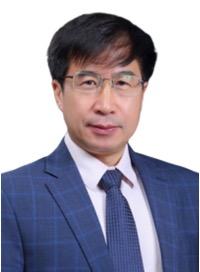High-throughput Characterization
of the Key Superalloy Components for Aerospace using Neutron and Synchrotron Radiation
Technologies
Wang
Yandong*, Li Shilei, Zhang Zhewei, Wang Youkang,
Yan Zhiran
Beijing Advanced Innovation Center for Materials
Genome Engineering, State Key Laboratory for Advanced Metals and Materials,
University of Science and Technology Beijing, Beijing 100083, China
ABSTRACT: The manufacturing
process of the core hot-end superalloy parts for advanced aero-engines is complicated,
and it is difficult to completely eliminate residual stress in the finished
parts. Under high temperature and complex loads during service, the residual
stresses in the superalloy components will lead to the reduction of fatigue
life and unexpected deformation. It is urgent to establish and develop the
in-situ non-destructive characterization techniques for the multi-scale
structure and stress evolution in superalloy components during the
manufacturing and service process. The high-throughput characterization
technologies based on neutron and synchrotron radiation technology provide
powerful methods for revealing the evolution of multi-scale structure and
stress in superalloy parts and materials. In this study, we used neutron
diffraction, synchrotron radiation high-energy X-ray diffraction and
synchrotron radiation micro-beam diffraction techniques to study the
characteristics of the cross-scale distribution of structure and stress in
typical superalloy components and materials, as well as the inheritance and
evolution laws during the manufacturing and service process. And the damage
micro-mechanism dominated by multi-scale stress under temperature and load was
also discussed. In case one, we used neutron diffraction, synchrotron radiation
X-ray diffraction and laboratory X-ray diffraction techniques to study the
multi-scale stress distribution from the surface to the interior of the powder
metallurgy turbine disk, and the law of multi-scale stress filed evolution in
the solution and aging processes. These results provide important support for
the development of new generation of powder metallurgy turbine disks. In case
two, the neutron time of flight technology was employed to in situ study the
deformation behavior and damage mechanism of superalloys containing different
sizes of γ' precipitates phases. The results help to reveal the stress
partitioning behaviors between γ' precipitate phases and the matrix in the superalloy.
In case 3, the micro-beam diffraction technology was carried out to investigate
the microstructure characteristics within the grains of superalloys after high
temperature fatigue. It is revealed that the microscopic damage mechanism in
superalloy during fatigue is closely related to the micro-scale
strain/orientation distribution and evolution within the grains.

Keywords: High-throughput characterization; superalloy; neutron diffraction; synchrotron radiation;

Yandong Wang, male, doctor of engineering, professor and doctoral supervisor of new metal State Key Laboratory of Beijing University of science and technology, winner of national outstanding youth fund, distinguished professor of Yangtze River scholars of Ministry of education, and head of "innovation team of material cause engineering based on large scientific device" of innovation team of key fields of Ministry of science and technology. Member of neutron scattering professional committee, member of China residual stress professional committee, international review member of China spallation neutron source engineering spectrometer/imaging spectrometer, international evaluation expert of North light source high energy line station, and member of Shanghai light source project II spectrometer construction expert group. Professor Wang Yandong is one of the pioneers in solving the problems in the field of engineering materials by using the large-scale scientific device of neutron and synchrotron radiation in China. He has made a lot of pioneering achievements in this field, and his research is at the international advanced level, which greatly promotes the application of neutron diffraction and synchrotron radiation technology in aviation industry. He has published more than 120 SCI papers on Science (1), nature (1), nature materials (1), PNAs (1), nature communications (2), advanced materials (3), Physical Review Letters (1) and Acta materialia (15). He has organized more than 40 symposiums on neutron and synchrotron radiation applications at international conferences such as TMS annual meeting in the United States.